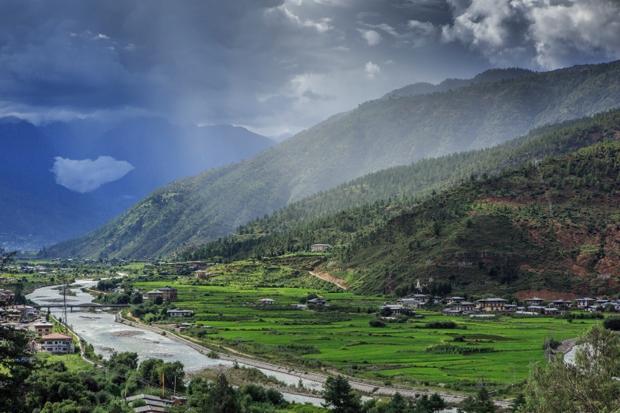There are few more beautiful places in this world than Bhutan in the eastern Himalayas. I know this because, right now, I am staring down the sub-tropical Punakha valley, gazing at an untouched rural landscape where singing women hoe the sunlit chilli fields. It’s glorious. And gloriously devoid of tourists. Though apparently Prince William and Kate are coming here in the next couple of weeks. I hope they don’t lower the tone.
This unusual absence of tourists is down to a government policy. Back in the 1980s (when perhaps two dozen outsiders made it into Bhutan every year) the authorities in the Kingdom of the Thunder Dragon looked at the way tourism was blitzing its way across similar Asian beauties such as Nepal and Thailand, India and the Seychelles, and thought ‘not for us’. They decided to impose a surcharge on all foreign visitors to keep the numbers down and so preserve their culture.
The result of this steep fee — £200 a day simply to be in Bhutan — is that tourism makes barely a dent. Yes, 50,000 people now come every year rather than 15, but more people probably enter your local supermarket every Saturday than cross into Bhutan in a week. And this lack of tourists makes Bhutan very charming indeed.
Of course, this is unique. Surely Bhutan’s policy could never be applied in, say, Europe? Well, hmm. A couple of experiences last year, encountered in my fortunate job as a travel writer, made me wonder whether Bhutan might be an ominous pioneer, not an eccentric outlier.
My first epiphany came in Taormina. I was writing about the glories of western Sicily and the Aeolians, and I was particularly looking forward to Taormina. Loved in its time by Goethe, Wagner, Yeats, Oscar Wilde, D.H.









Comments
Join the debate for just £1 a month
Be part of the conversation with other Spectator readers by getting your first three months for £3.
UNLOCK ACCESS Just £1 a monthAlready a subscriber? Log in